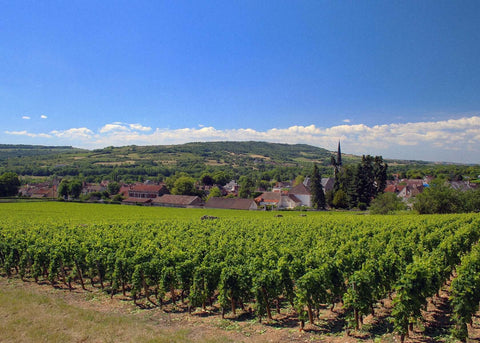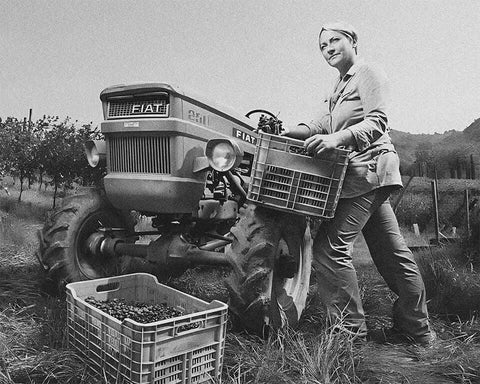Table of Contents
- Introduction: Bridging Culinary Worlds
- Korean Food and Wine Pairing
- Classic Korean Dishes and Their Natural Wine Soulmates
- Regional Korean Specialties and Their Natural Wine Counterparts
- Pairing Outside the Box
- Korean Cuisine and Natural Wine Bars
- The Role of Temperature in Korean Food and Wine Pairings
- Natural Wines for Fiery Korean Dishes
- Banchan and Wine Pairing
- Fusion Korean Cuisine and Natural Wine
- Natural Wine and Korean Desserts: Sweet Endings
- Korean Cuisine and Natural Wine: a Seasonal Affair
- Conclusion: A World of Flavors to Explore
Introduction: Bridging Culinary Worlds
Imagine sitting at a table laden with vibrant Korean dishes, their aromas mingling enticingly in the air. Now, picture complementing these bold flavors with the perfect glass of natural wine. Intrigued? You're about to embark on a culinary adventure that marries the ancient traditions of Korean cuisine with the innovative world of natural wines. In this comprehensive guide, we'll explore the exciting realm of natural wine and Korean food pairings, uncovering combinations that will tantalize your taste buds and elevate your dining experience to new heights.
Understanding Natural Wine: A Brief Overview
Before we dive into the art of pairing, let's take a moment to understand what sets natural wine apart. Natural wines are made with minimal intervention in the vineyard and cellar, often using organic or biodynamic grapes. These wines are typically fermented with native yeasts and contain little to no added sulfites. The result? Wines that are vibrant, alive, and full of character – perfect companions for the complex flavors of Korean cuisine.
Key Characteristics of Natural Wine:
- Minimal intervention in production
- Often cloudy or unfiltered
- Unique flavor profiles
- Lower alcohol content compared to conventional wines
- Vibrant acidity and freshness
Korean Food and Wine Pairing
Pairing wine with Korean food presents a unique challenge and opportunity. Korean cuisine is known for its bold flavors, diverse textures, and the concept of banchan (small side dishes served alongside the main course). When pairing natural wines with Korean food, consider these general guidelines:
- Balance the intensity of the wine with the intensity of the dish
- Consider the acidity of both the wine and the food (think kimchi and other fermented dishes)
- Take into account the spice levels in Korean dishes
- Don't forget about the importance of texture in both the food and wine
- Remember that many Korean meals involve multiple dishes served simultaneously

Classic Korean Dishes and Their Natural Wine Soulmates
1. Bibimbap and Orange Wine
Bibimbap, a beloved Korean rice dish topped with various vegetables, meat, and a fried egg, calls for a wine that can stand up to its diverse flavors and textures. Enter orange wine, also known as skin-contact white wine.
Why it works: The textural complexity and slightly tannic nature of orange wine pairs beautifully with the varied components of bibimbap. The wine's oxidative notes often include nutty and savory characteristics that enhance the umami flavors in the dish. Look for orange wines made from Pinot Grigio or Rkatsiteli grapes for an exceptional pairing.
2. Korean Barbecue (Gogigui) and Natural Red Blends
For the rich, smoky flavors of Korean barbecue, whether it's bulgogi (marinated beef) or samgyeopsal (pork belly), a robust natural red blend is in order.
Why it works: The fruit-forward nature of many natural red blends complements the sweet and savory marinades used in Korean barbecue, while their structure stands up to the fatty cuts of meat. Look for natural red blends from regions like the Rhône Valley or Sicily, which often combine grapes like Grenache, Syrah, and Mourvèdre for a complex, satisfying pairing.
3. Kimchi Jjigae and Pét-Nat
Kimchi jjigae, a spicy and sour kimchi stew often made with pork or tuna, calls for a wine that can match its intensity while providing refreshment. Pét-Nat (Pétillant Naturel) rises to the challenge.
Why it works: The bright acidity and bubbles in Pét-Nat cut through the richness of the stew while complementing its spicy and sour notes. The wine's effervescence also helps cleanse the palate between bites. For an exciting pairing, look for a Pét-Nat made from aromatic grapes like Muscat or Gewürztraminer.
4. Haemul Pajeon (Seafood Green Onion Pancake) and Natural Vinho Verde
The crispy, savory haemul pajeon, studded with seafood and green onions, pairs wonderfully with a light, crisp natural white wine. A natural Vinho Verde from Portugal is an excellent choice.
Why it works: The light, slightly effervescent nature of Vinho Verde complements the crispy texture of the pancake, while its citrusy notes enhance the freshness of the seafood. Natural Vinho Verde often has a touch of salinity that pairs beautifully with the pancake's savory flavors. Look for versions made from traditional Portuguese grapes like Alvarinho or Loureiro.
5. Japchae (Stir-Fried Glass Noodles) and Natural Gamay
Japchae, a popular Korean dish of stir-fried sweet potato noodles with vegetables and sometimes meat, calls for a versatile, light-bodied red wine. Natural Gamay fits the bill perfectly.
Why it works: The light tannins and bright fruit flavors of Gamay complement the savory-sweet flavors of japchae without overpowering the delicate noodles. Natural Gamay often has a slightly earthy quality that pairs well with the vegetables in the dish. Look for Gamay from Beaujolais or the Loire Valley for some exciting natural options.

Regional Korean Specialties and Their Natural Wine Counterparts
Korea's diverse regions each have their own culinary specialties. Let's explore some regional dishes and their natural wine pairings:
Jeju Island: Grilled Mackerel and Natural Assyrtiko
Jeju Island, known for its seafood, is famous for its grilled mackerel. This oily fish calls for a wine with high acidity and mineral notes.
Pairing recommendation: Look for a natural Assyrtiko from Greece. This white wine's high acidity and saline quality make it an excellent match for grilled mackerel. The wine's citrus and mineral notes complement the fish's rich flavor without overpowering it.
Busan: Dwaeji Gukbap (Pork Soup with Rice) and Natural Chenin Blanc
Busan's famous dwaeji gukbap is a hearty soup made with pork and served with rice. Its rich, comforting flavors call for a wine with body and acidity.
Pairing recommendation: A natural Chenin Blanc from the Loire Valley is an excellent choice. The wine's acidity cuts through the soup's richness, while its apple and honey notes complement the pork's savory flavors. Look for off-dry versions to balance any spice in the dish.
Jeonju: Bibimbap and Natural Grüner Veltliner
Jeonju is famous for its version of bibimbap, served in a hot stone bowl with a raw egg yolk on top. This dish requires a versatile white wine with good acidity.
Pairing recommendation: Try a natural Grüner Veltliner from Austria. This wine's green apple and white pepper notes complement the vegetables in bibimbap, while its acidity balances the dish's richness. The wine's slight herbaceousness also pairs well with the dish's sesame oil and gochujang (red chili paste).
Pairing Outside the Box
As you become more comfortable with natural wine and Korean food pairings, don't be afraid to experiment with unconventional combinations. Here are some ideas to inspire your adventurous spirit:
1. Bossam (Boiled Pork Wraps) and Natural Skin-Contact Pinot Gris
Bossam, thinly sliced boiled pork served with lettuce wraps and condiments, pairs surprisingly well with a skin-contact (orange) Pinot Gris. The wine's texture and slight tannins complement the pork's richness, while its fruit notes balance the salty and spicy condiments.
2. Samgyetang (Ginseng Chicken Soup) and Natural Savagnin
For the nourishing samgyetang, traditionally eaten during the hottest days of summer, try a natural Savagnin from Jura. The wine's oxidative notes and high acidity complement the soup's rich, herbal flavors.
3. Tteokbokki (Spicy Rice Cakes) and Chilled Natural Trousseau
For the chewy, spicy tteokbokki, experiment with a chilled natural Trousseau from Jura. Served slightly below room temperature, this light red wine provides a cooling effect while offering enough body to stand up to the dish's bold flavors.

Korean Cuisine and Natural Wine Bars
As Korean cuisine and natural wine continue gaining popularity worldwide, we're seeing an exciting trend emerge: Korean restaurants and natural wine bars joining forces. These establishments are popping up in cities worldwide, offering carefully curated selections of natural wines alongside traditional and fusion Korean dishes.
Some notable examples include:
- Hanbun in Chicago, Illinois
- Banchan in London, UK
- Quay Bar in Sydney, Australia
- Le Baratin in Paris, France
These spots are great places to enjoy delicious Korean food and wine pairings and serve as educational hubs where you can learn more about Korean cuisine and natural wines.
The Role of Temperature in Korean Food and Wine Pairings
An often overlooked aspect of pairing wine with Korean food is temperature - both of the food and the wine. Many Korean dishes are served piping hot (think sizzling bibimbap or bubbling jjigae), while others are enjoyed at room temperature or even cold (like muchim or naengmyeon).
When pairing natural wines with hot Korean dishes, consider serving white and sparkling wines slightly warmer than usual. This allows the wine's aromas and flavors to open up, standing up better to the food's heat.
Conversely, don't be afraid to chill your red wines slightly when pairing with cold Korean dishes. A cool natural Gamay or Pinot Noir can be a delightful accompaniment to cold noodle dishes or chilled seafood preparations.
Natural Wines for Fiery Korean Dishes
Spice is a hallmark of many Korean dishes, from the subtle heat of gochugaru (red pepper flakes) to the fiery kick of raw garlic and gochujang. When pairing natural wines with spicy Korean food, consider these strategies:
- Embrace sweetness: A touch of residual sugar in wine can help balance spicy heat. Look for off-dry natural Rieslings or Chenin Blancs.
- Go for bubbles: Sparkling wines like Pét-Nat can help cleanse the palate and mitigate spiciness.
- Consider chilled reds: Light-bodied red wines served cool can be refreshing with spicy dishes.
- Don't fear tannins: Contrary to popular belief, tannic red wines can work well with some spicy dishes, especially those featuring red meat.
Banchan and Wine Pairing
Banchan, the array of small side dishes served alongside the main course in a Korean meal, presents a unique challenge and opportunity for wine pairing. With multiple flavors, textures, and temperatures on the table at once, how do you choose a wine?
One approach is to focus on versatile, high-acid wines that can complement a range of flavors. Natural white wines like Chenin Blanc or Albariño, with their balance of fruit, acidity, and mineral notes, can work well across many banchan.
Another strategy is to embrace the complexity and choose multiple wines for the meal. This allows diners to experiment with different pairings throughout the meal, discovering new flavor combinations with each bite.

Fusion Korean Cuisine and Natural Wine
As Korean cuisine continues to evolve and inspire chefs around the world, we're seeing exciting fusion dishes that blend Korean flavors with other culinary traditions. These fusion creations open up new possibilities for natural wine pairings.
For example:
- Korean-Mexican fusion dishes like kimchi quesadillas or bulgogi tacos pair wonderfully with natural orange wines. The complexity and texture of skin-contact wines complement the bold flavors of these fusion dishes.
- Korean-Italian creations such as gochujang pasta or kimchi risotto find great companions in natural Italian reds like Nebbiolo or Sangiovese. These wines have the acidity to cut through rich dishes while their tannins stand up to bold Korean flavors.
- Korean-Southern U.S. fusions like Korean fried chicken with waffles call for something fun and refreshing. A natural sparkling rosé or a pétillant naturel (pét-nat) can provide a delightful contrast to the rich, spicy-sweet flavors of the dish.
Natural Wine and Korean Desserts: Sweet Endings
Korean desserts, often less sweet than their Western counterparts, present unique opportunities for natural wine pairings. Let's explore some delightful combinations:
1. Bingsu (Shaved Ice Dessert) and Natural Moscato d'Asti
Bingsu, a popular Korean shaved ice dessert topped with various sweet additions, pairs beautifully with a natural Moscato d'Asti. The wine's light bubbles and sweet fruit notes complement the dessert's icy texture and varied toppings.
2. Hotteok (Sweet Pancakes) and Natural Late Harvest Riesling
Hotteok, filled with a sweet mixture of brown sugar, nuts, and cinnamon, finds a perfect match in a natural late-harvest Riesling. The wine's honeyed sweetness and bright acidity balance the pancake's rich filling.
3. Yakgwa (Deep-fried Honey Cookies) and Natural Vin Santo
The honey and sesame flavors of yakgwa pair wonderfully with a natural Vin Santo. This Italian dessert wine's notes of dried fruits and nuts complement the cookies' sweetness and nutty undertones.
Korean Cuisine and Natural Wine: a Seasonal Affair
Korean cuisine greatly emphasizes seasonality, with dishes and ingredients changing throughout the year. This seasonal approach aligns beautifully with the natural wine philosophy, where each vintage reflects the unique conditions of its growing season.
Spring
In spring, light, fresh dishes like sanchae bibimbap (mountain vegetable bibimbap) come to the fore. Pair these with equally fresh natural wines like an Aligoté from Burgundy or a Vinho Verde from Portugal.
Summer
Summer calls for cooling dishes like naengmyeon (cold buckwheat noodles) or dongchimi guksu (cold radish water noodle soup). These pair wonderfully with crisp, refreshing natural wines like Txakoli from Spain or Muscadet from the Loire Valley.
Autumn
Autumn brings heartier fare like doenjang jjigae (soybean paste stew) and grilled mackerel. These robust flavors call for fuller-bodied natural wines, such as orange wines from Georgia or robust reds like Nero d'Avola from Sicily.
Winter
In winter, warming dishes like kimchi jjigae and tteokguk (rice cake soup) take center stage. Pair these with equally warming natural wines like skin-contact Pinot Gris from Alsace or a robust natural Syrah from the Northern Rhône.
Conclusion: A World of Flavors to Explore
The world of natural wine and Korean food pairings is a vast and exciting frontier, offering endless possibilities for flavor exploration. From traditional dishes to modern fusion creations, from robust barbecues to delicate desserts, there's a natural wine pairing to elevate every Korean culinary experience.
Remember, the most important rule in pairing is to trust your palate and enjoy the experience. Don't be afraid to experiment, to try unexpected combinations, and to share your discoveries with others. The beauty of pairing natural wines with Korean food lies in the journey of exploration, the joy of discovery, and the pleasure of sharing these experiences with friends and loved ones.
So, the next time you sit down to a Korean meal, why not open a bottle of natural wine to go with it? You might just discover your new favorite pairing. Here's to good food, good wine, and the endless adventure of culinary exploration! Geonbae (cheers) and bon appétit!










